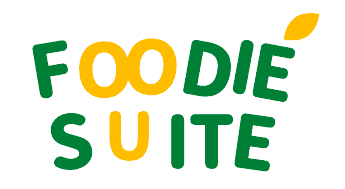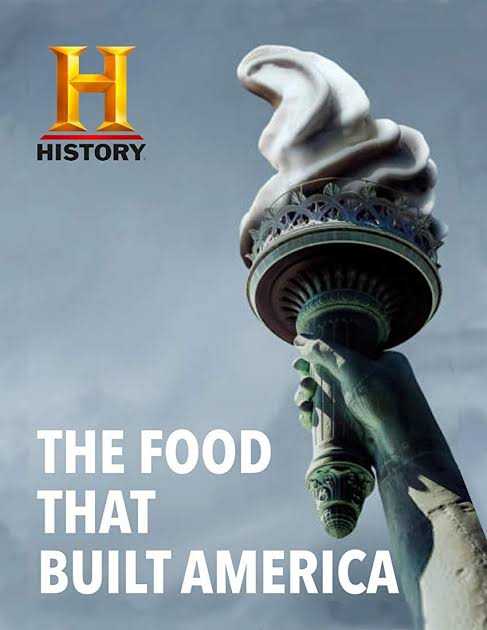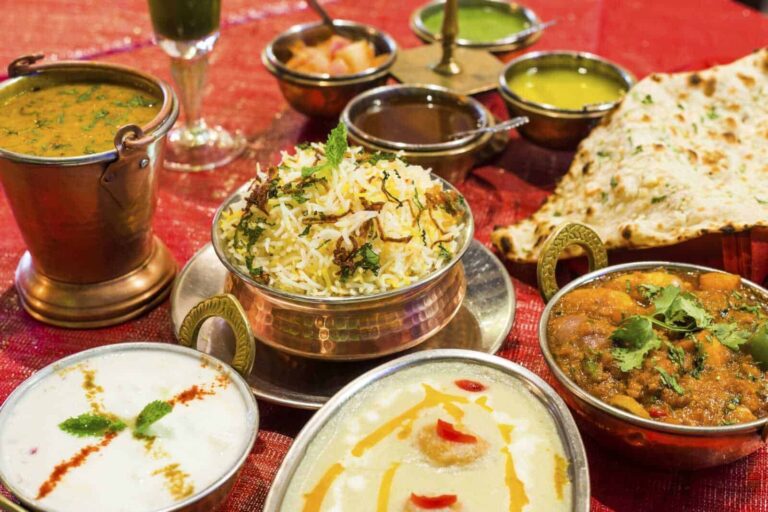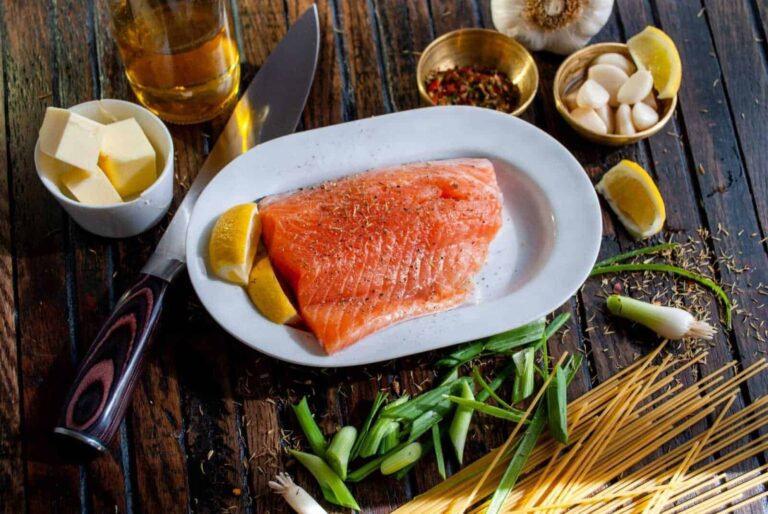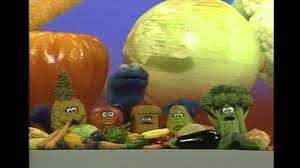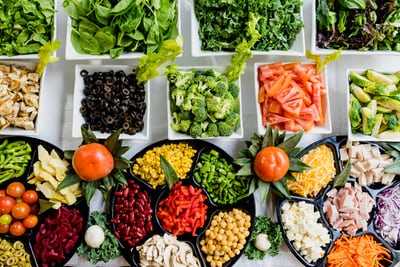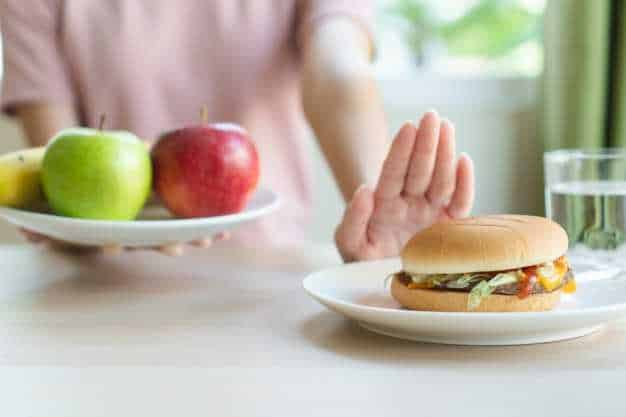TOP 10 FOODS HIGH IN IRON

Iron is a mineral that performs a variety of essential purposes, one of which is to bring oxygen into the body as part of the red blood cells.
It’s a necessary nutrient, so you’re going to have to get it from fruit. Normal Value (DV) is 18 mg a day.
Interestingly, the amount of iron that the body consumes is partially dependent on how much you store.
A deficit can arise if your consumption is too poor to cover the amount you lose per day.
Iron deficiency can cause anemia which can lead to symptoms such as fatigue. Menstruating women who do not eat iron-rich diets are at an especially high risk of deficiency.
Luckily, there are plenty of good food choices to help you meet your daily iron needs.

How Your Body Uses Iron in Food?
When you eat iron food, iron is ingested into your body primarily through the upper portion of your small intestine.
There are two types of dietary iron: heme and non-heme. Iron heme is derived from hemoglobin. It is present in animal foods that initially included hemoglobin, such as red meat, fish, and poultry (meat, poultry, and seafood contain both heme and non-heme iron). Your body consumes much of the iron from heme sources. Any nonheme iron comes from plant sources.
here are the top 10 foods high in iron
1- Spinach

Spinach has many nutritional advantages, but relatively little calories.
Around 3.5 ounces (100 grams) of raw spinach contains 2.7 mg of iron or 15% of DV.
While this is non-heme iron, which is not well absorbed, spinach is also high in vitamin C. This is important because vitamin C greatly improves the absorption of iron.
Spinach is also high in antioxidants called carotenoids, which can reduce the chance of cancer, reduce inflammation, and shield your eyes from disease.
Eating spinach and other leafy greens with fat helps the body digest carotenoids, so make sure you eat good fat like olive oil with your spinach.
2- Shellfish
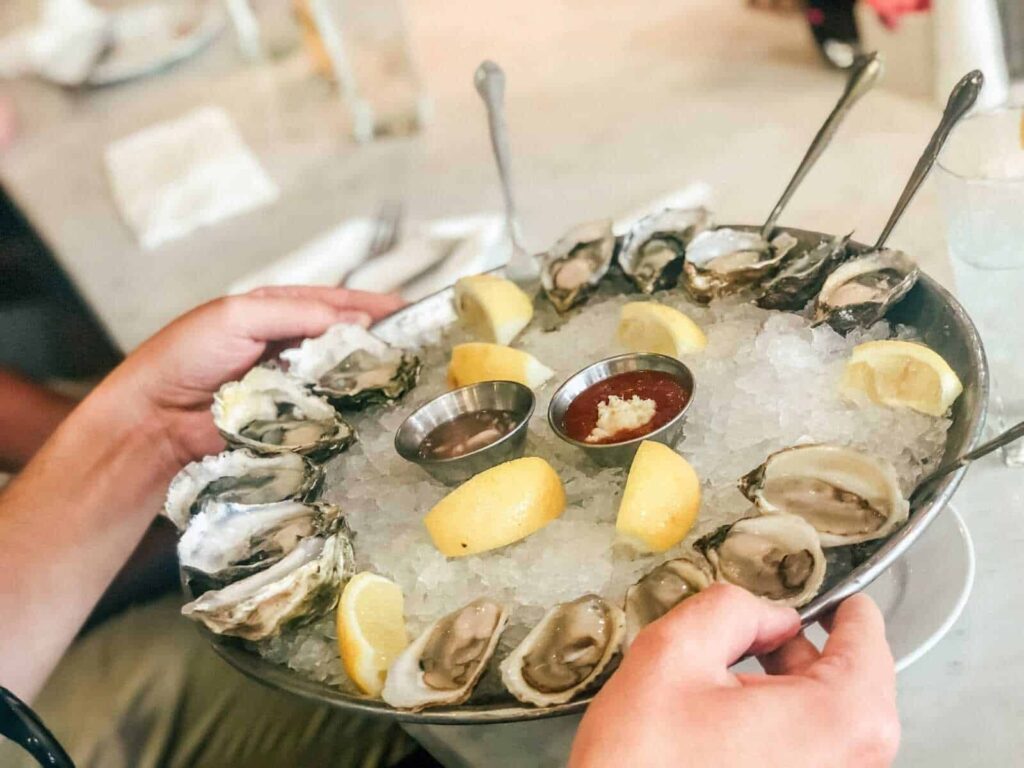
Shellfish is delicious and nutritious. All shellfish are rich in iron, but clams, oysters, and mussels are especially good sources.
For example, a 3.5-ounce (100-gram) serving of clams can contain up to 3 mg of iron, or 17 percent of DV.
However the iron content of the clams is highly variable, and certain varieties can have much smaller concentrations.
Iron in shellfish is heme iron, which is more readily consumed by the body than non-heme iron present in plants.
A 3.5-ounce serving of clams also contains 26 grams of protein, 24 percent of DV for vitamin C, and 4.125 percent of DV for vitamin B12.
In reality, all shellfish are rich in nutrients and has been shown to raise the amount of heart-healthy HDL cholesterol in your blood.
While there are reasonable worries regarding mercury and toxins in some varieties of fish and shellfish, the advantages of the use of seafood greatly outweigh the dangers.
3- Legumes
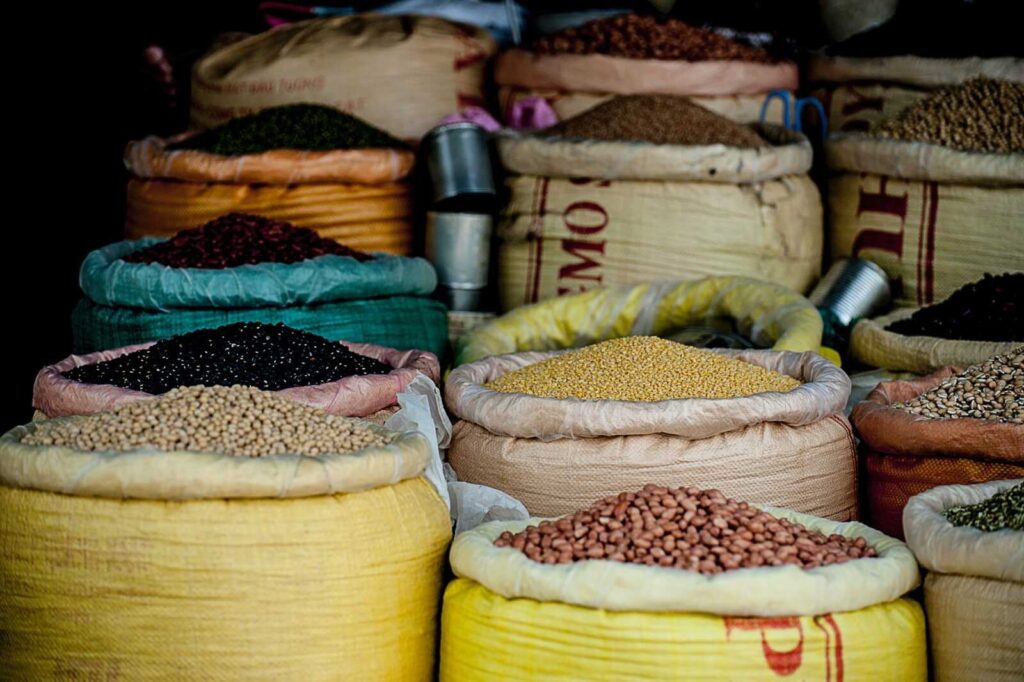
Legumes are filled with nutrients.
Some of the most common varieties of legumes are beans, lentils, chickpeas, peas, and soya.
They are a great source of iron, particularly for vegetarians. One cup (198 grams) of cooked lentils contains 6.6 mg, which is 37% of the DV.
Beans like black beans, navy beans, and kidney beans will all help to bump the iron intake quickly.
In fact, half a cup (86 grams) of cooked black beans offers around 1.8 grams of iron or 10% of DV.
Vegetables are also a healthy source of folate, magnesium, and potassium.
Moreover, studies have shown that beans and other legumes can minimize inflammation in people with diabetes. Legumes can also minimize the risk of a heart attack in people with metabolic syndrome.
Also, legumes will help you lose weight. They are very rich in soluble fiber, which can improve the sense of fullness and decrease calorie intake.
In one study, a high-fat diet containing beans was found to be as effective as a low-carb diet for weight loss.
Consume legumes with high vitamin C foods such as tomatoes, greens, or citrus fruits to improve iron absorption.
4- Red meat
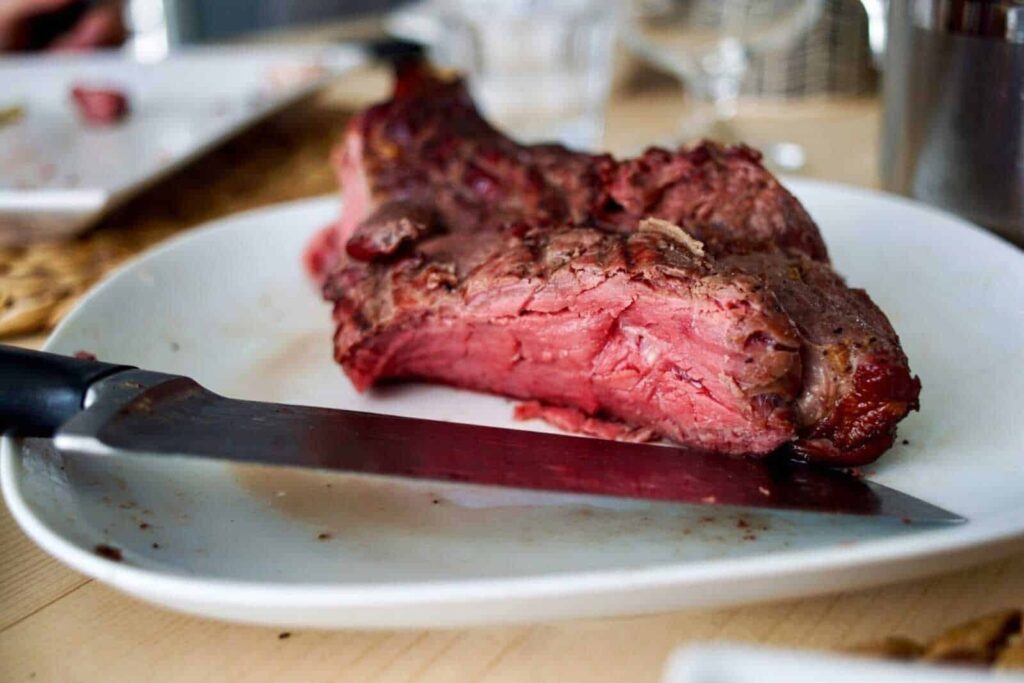
Red meat is very enjoyable and nutritious.
A 100-gram (3.5-ounce) serving of ground beef contains 2.7 mg of iron, which is 15% of the DV.
Meat is also high in protein, copper, selenium, and a variety of B vitamins.
Researchers also indicated that iron deficiency could be less common in people who frequently eat beef, poultry, and fish.
In fact, red meat is perhaps the most readily accessible source of heme iron, possibly making it an important food for people who are vulnerable to anemia.
In one study of improvements in iron stores after physical activity, women who ate meat stored iron better than those who took iron supplements.
5- Quinoa

Quinoa is a common grain known as a pseudo-cereal. One cup (185 grams) of cooked quinoa contains 2.8 mg of iron or 16 percent of DV.
Quinoa also contains no gluten, making it a safe option for those with celiac disease or other types of gluten sensitivity.
Quinoa is also richer in protein than many other grains and rich in folate, magnesium, zinc, manganese, and many other nutrients.
Quinoa also has more antioxidant function than many other crops. Antioxidants help shield the cells from the damage caused by free radicals that are produced through digestion and in response to stress.
6- Pumpkin seeds

Pumpkin seeds are a delicious, portable snack.
A 1-ounce (28-gram) serving of pumpkin seed produces 2.5 mg of copper or 14 percent of DV.
Also, pumpkin seed is a strong source of vitamin K, zinc, and manganese. They are also among the best suppliers of magnesium, of which many people are poor.
A 1-ounce (28-gram) serving contains 40% of the magnesium DV, which helps reduce the chance of insulin resistance, diabetes, and depression.
7- Broccoli
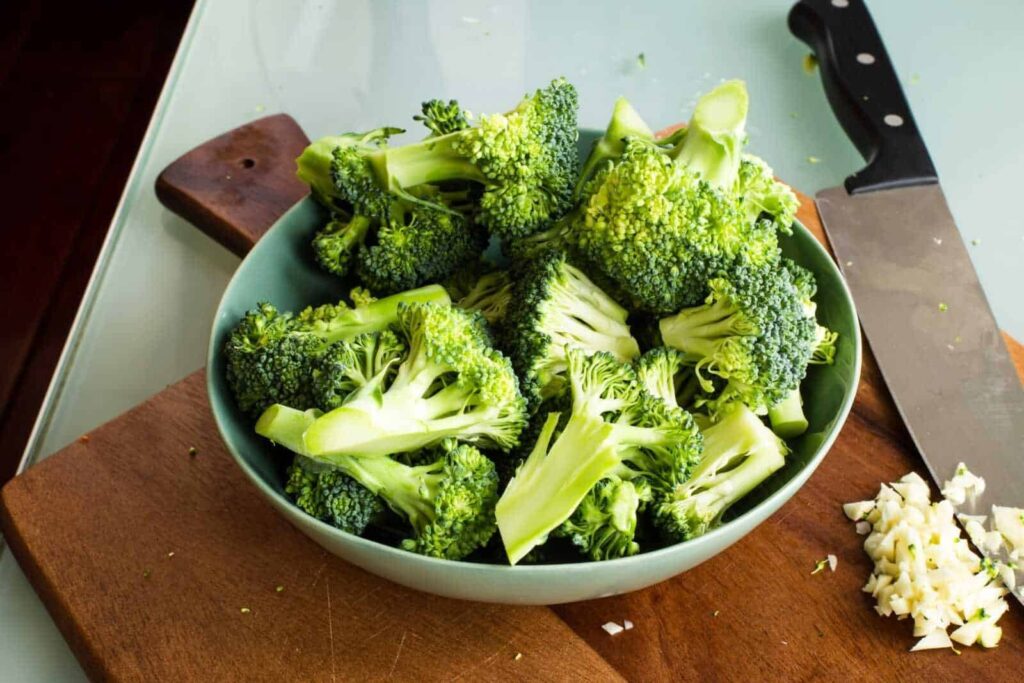
Broccoli is extremely nutritious. A 1-cup (156-gram) serving of cooked broccoli contains 1 mg of iron, i.e. 6 percent of DV.
What’s more, the broccoli part also contains 112 percent of the vitamin C DV, which lets the body properly absorb iron.
The same serving size is also rich in folate and contains 5 grams of fiber and some vitamin K. Broccoli is a member of the family of cruciferous plants, which also includes cauliflower, Brussels sprouts, kale, and cabbage.
Cruciferous vegetables include indole, sulforaphane, and glucosinolate, which are plant compounds known to protect against cancer.
8- Tofu
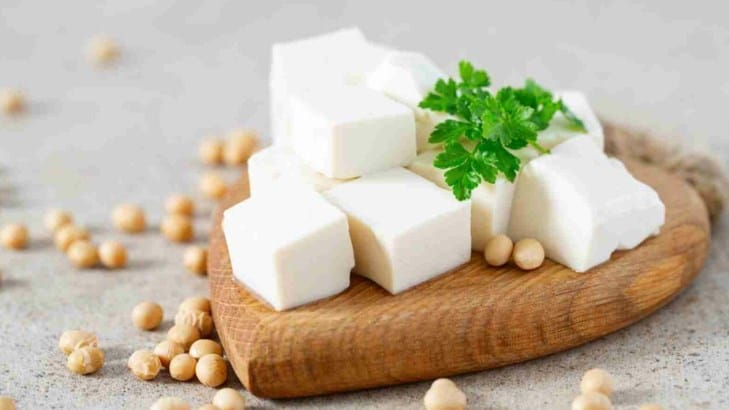
Tofu is a soy-based food popular among vegetarians and in some Asian countries.
A half-cup (126-gram) serving contains 3.4 mg of iron, which is 19 percent of the DV.
Tofu is also a strong source of thiamine and a variety of minerals, including calcium, magnesium, and selenium. It also contains 22 grams of protein per meal.
Tofu produces special compounds called isoflavones, which have been associated with increased insulin sensitivity, reduced risk of heart failure, and relief of menopausal symptoms.
9- Dark chocolate
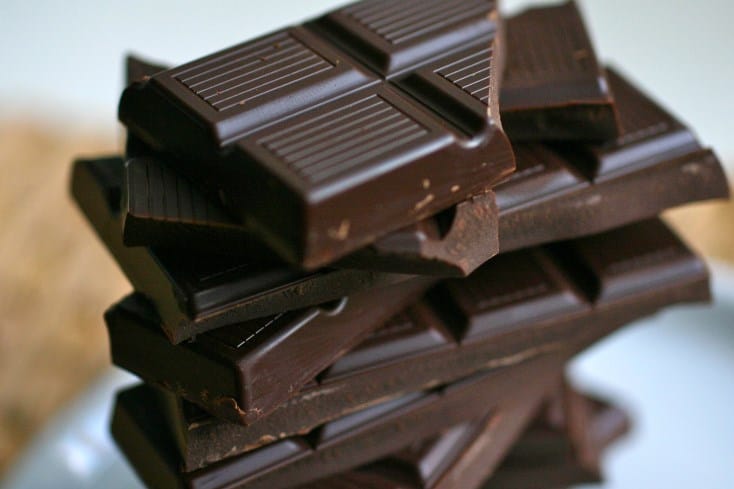
Dark chocolate is extremely sweet and nutritious.
A 1-once (28-gram) serving contains 3.4 mg of iron, which is 19 percent of the DV.
This limited serving also includes 56 percent and 15 percent of the copper and magnesium DVs respectively.
It also provides prebiotic fiber that nourishes the pleasant bacteria in your intestine.
An analysis showed that cocoa powder and dark chocolate had greater antioxidant function than acai berry and blueberry powder and juice.
Studies have also demonstrated that chocolate has positive effects on cholesterol and can reduce the risk of heart attacks and strokes.
Not all chocolate is made equal, though. It is known that compounds called flavanols are responsible for the advantages of chocolate, and the amount of dark chocolate flavanol is much greater than that of chocolate milk (57).
It is also safer to eat chocolate with a minimum of 70% cocoa to achieve the optimum value.
10- Fish

Fish is a highly nutritious ingredient, and certain varieties, such as tuna, are extremely rich in iron.
In reality, a 3-ounce (85-gram) serving of canned tuna contains about 1.4 mg of iron, which is about 8 percent of the DV.
Fish also has omega-3 fatty acids, which are a form of heart-healthy fat associated with a variety of health benefits.
In fact, omega-3 fatty acids have been found to improve brain wellbeing, improve immune function, and promote healthy growth and development.
Fish also contains a variety of other essential nutrients, including niacin, selenium, and vitamin B12.
Besides salmon, haddock, mackerel, and sardines, there are a few other types of iron-rich seafood that you can also include in your diet.
Tips to get enough iron
The tips below will help you optimize your nutritional consumption of iron:
Eat lean red meat: the strongest form of readily absorbed heme iron. Eating it a couple of days a week will help if you are deficient.
Eat chicken and fish: these are healthy sources of heme iron as well. Eat a wide range of them.
Consume vitamin C-rich foods: eat vitamin C-rich foods at meals to improve the absorption of non-haem iron. Any lemon juice drizzled over leafy greens, for example, can increase the amount you consume.
Stop coffee, tea, or milk in the vicinity of meals: avoid food containing iron-rich foods. Get a cup of coffee or tea between meals instead.
Choose foods that are high in non-heme iron: if you don’t consume meat and fish, have lots of iron-rich plant foods in your diet.
Health risks of extra iron
Food-borne iron toxicity is uncommon. When it’s eaten, the body has its own balance device to make sure it’s having plenty.
However, one study found that deadly overdoses with high intakes of iron supplements were likely.
Excessive amounts of iron can also arise in certain patients with a disorder called hemochromatosis. This is normally caused by a gene that increases absorption.
Other sources of iron overload include frequent blood transfusions, large nutritional doses, and rare metabolic diseases.
Also, eating so much iron over time can cause large deposits of iron to develop in the liver and other tissues.
This can lead to diabetes, heart failure, and liver damage.
You should also never take an iron substitute until it is prescribed to you by a health practitioner.
read more: The Importance of Peanut Butter Blossoms
